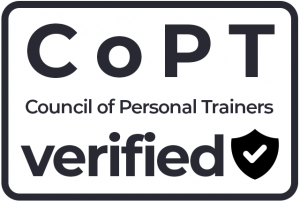Best Gym Machines For Runners
By Freya

Whether you’re chasing a 5K PB, training for a marathon, or just enjoying weekend runs, one thing is clear: strong runners are better runners.
At Halo Gym, we love seeing runners hit their stride. And while pounding the pavement is great for cardio, complementing your training with the right gym machines can take your performance and injury prevention to the next level.
Here’s your guide to the best gym machines for runners and how to use them like a pro.
Why Runners Need Strength Training
Running is repetitive. That means over time, muscles can become imbalanced, weak, or overworked, especially in the hips, glutes, hamstrings, and calves.
Strength training:
- Builds muscle stability and joint support
- Improves stride efficiency and running economy
- Reduces risk of injury (especially knees and IT band issues)
- Helps with posture and core engagement
- Supports faster recovery
Top Gym Machines for Runners (and How to Use Them)
- Leg Press Machine
What it does: Builds powerful quads, glutes, and hamstrings.
Why it’s great: Targets key muscles without stressing the knees as much as heavy squats.
Top Tip: Focus on slow, controlled reps and don’t lock your knees at the top.
- Cable Machine (for Hip & Core Work)
What it does: Trains lateral stability and rotation, key for hip strength and core control.
Why it’s great: You can mimic running movement patterns with standing cable exercises.
Try: Cable hip abductions, cable woodchops, standing rotations.
- Hamstring Curl Machine
What it does: Strengthens your hamstrings which is essential for push-off and knee stability.
Why it’s great: Runners often have weak or underactive hamstrings compared to their quads.
Top Tip: Keep the movement controlled; avoid fast, jerky curls.
- Leg Curl + Extension Combo
What it does: Balances strength between front and back of the legs.
Why it’s great: Helps avoid muscle imbalances that lead to IT band and knee pain.
Pro Move: Do single-leg sets to spot and fix asymmetries.
- Smith Machine
What it does: Assists with squats, lunges, and split squats in a controlled movement path.
Why it’s great: Safer for beginners or those recovering from injury.
Try: Bulgarian split squats for one–leg strength and stability.
- Treadmill with Incline Feature
What it does: Allows controlled hill training for strength and endurance.
Why it’s great: No need to hunt for hills outdoors, great for rainy-day sessions or intervals.
Top Tip: Use incline walking for low-impact glute and calf activation on recovery days.
- Rowing Machine
What it does: Total-body cardio that complements running without more impact.
Why it’s great: Strengthens your posterior chain and improves cardiovascular endurance.
Pro Tip: Include short rowing intervals in your cross-training days.
Don’t Forget Your Core!
Strong runners have strong cores. Use the cable machine, ab crunch machine, or plank variations on the mat to train:
- Obliques
- Lower abdominals
- Hip flexors
- Lower back
A solid core = a smoother, more powerful stride.
Stronger in the Gym, Faster on the Run
You don’t need to overhaul your entire training plan, just 2 strength sessions a week on these machines can massively boost your running performance and reduce injury risk.
At Halo Gym, we’re here to support every kind of athlete from sprinters to marathoners. Not sure where to start? Book a session with one of our coaches and we’ll help tailor your gym time to match your running goals.

About the author
When she’s not writing, you’ll find her lifting weights, exploring Kent’s countryside, or capturing her fitness journey through @freyajones.jpeg.

